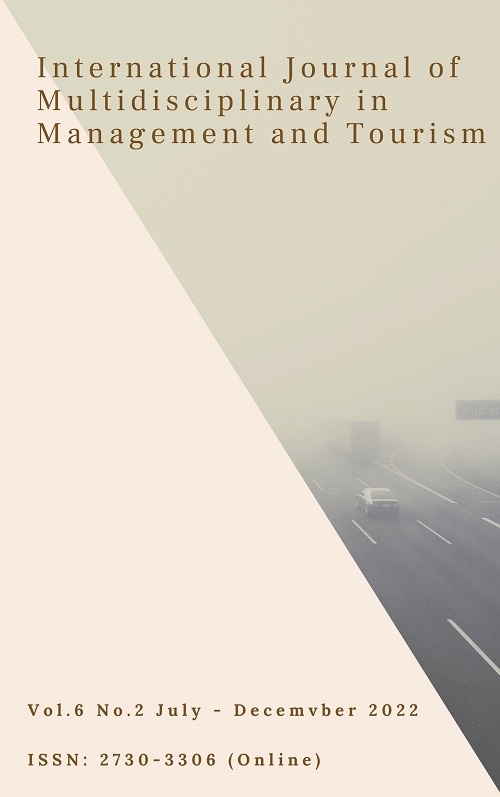An Exploratory of Thai Herbs Supply Chain Connectivity: A Case Study
Main Article Content
Abstract
The worldwide demand for herbs is increasing yearly, especially in the treatment and beauty industry. The northern part of Thailand is one area that grows herbs and supports domestic and international markets. Even though growing herbs in the Northern area generate a high value in the Thailand herbs market, the stakeholders in the supply chain system of the herbs business are still faced with some barriers which affect the performance of the company, the quality of the products, and marketing. Therefore, this study aims to investigate the current situation of Thai herbs' supply chain management system and also find the essential barriers and opportunities for Thai herbs' supply chain management. This study focused on the three potential herbs, which are Limonella (Zanthoxylum Limonella), Turmeric (Curcuma longa Linn), and Kariyat (Andrographis paniculate). The unstructured interview was used to collect the data from the stakeholders in the supply chain system. The finding of this study found that there are some barriers, such as market distance barriers, marketing barriers, and lack of laboratory tests. Different opportunities arise for Thai herbs' supply chain management, which includes resourceful location, adequate labor force, government promotion, and international market demand. The results of this study can be the guideline for further research of researchers and other related industries.
Article Details

This work is licensed under a Creative Commons Attribution-NonCommercial-NoDerivatives 4.0 International License.
References
Cohen, J. (1960). A Coefficient of Agreement for nominal scales, Educational and Psychological Measurement, 1, 37-46.
Golonko, M., Wysokiński, M., Gromada, A. & Trębska, P. (2021). Economic aspects of integrating the supply chain in the herbal industry in Poland. European Research Studies Journal, XXIV(Sp1), 2021, 403-413.
Govindaraghavan, S. (2008). Quality assurance of herbal raw materials in supply chain: Challenges and opportunities. Journal of Dietary Supplements, 5(2), 176-212.
Hasachoo, N. & Kalaya, P. (2013). Competitiveness of local agriculture: The case of Longan fruit trade between China and the North of Thailand. Irasec's Discussion Papers.
He, M. & Shi, J. (2021). Circulation traceability system of Chinese herbal medicine supply chain based on internet of things agricultural sensor. Sustainable Computing: Informatics and Systems, 30, 100518.
Lambert, D. M., Cooper, M. C. & Pagh, J. D. (1998). Supply chain management: Implementation issues and research opportunities. The International Journal of Logistics Management, 9(2), 1-20.
Litvinova, T. M., Glazkova, I. U., Sinitsyna, A. A., Ermakov, D. A., & Nesterov, G. V. (2020). Supply chain of laminaria herbal substances for the pharmaceutical industry of the Russian federation. Journal of Advanced Pharmacy Education & Research, 10(3), 134-140.
Loukili, A., Cherqaoui, F. E., & Elhaq S. L. (2021). Performance analysis and organization of a supply chain: Case study of butane import at Mohammedia port. International Journal of Logistics Systems and Management, 38(2), 217 – 238.
Min, H. (2021). An inter-organisational decision support system for global supply chain management. International Journal of Logistics Systems and Management, 38(4), 475 – 487.
Nayak, K. K., Singhal, D., & Tripathy S. (2021). Determination of challenges and driving forces of green supply chain management in Indian manufacturing industries: a critical review. International Journal of Logistics Systems and Management, 40(1), 28 – 51.
Ngarmngern, W. & Sribenjachot, S. (2021). State, demand and streamline supply chain of Thai innovative cosmetics industry. GIS Business, 16(2), 27-34.
Octavia, A., Sriayudha, Y., & Ali, H. (2020). Innovation capability and supply chain management: empirical study of Indonesian traditional herbal medicine products. International Journal of Supply Chain Management, 9(1), 2051-3771.
Panich. P., Hasachoo. N., & Sirisawat. P. (2018). Key success factors for improving community based-tourism supply chain. The 2nd UTTC Academic Day (National Conference in Thai). University of the Thai Chamber of Commerce.
Rai, S. S., Das, D., Ganguly, K., Giri, S. & Mishra, S.K. (2021). Stage-wise responsiveness in supply chain: reference from the Indian garment industry. International Journal of Logistics Systems and Management, 39(4), 409 – 436.
Rajak, S., Parthiban, P. & Dhanalakshmi, R. (2021). A DEA model for evaluation of efficiency and effectiveness of sustainable transportation systems: a supply chain perspective. International Journal of Logistics Systems and Management, 40(2), 220 – 241.
Rivera J.O., Loya A.M., & Ceballos R. (2013). Use of herbal medicines and implications for conventional drug therapy medical sciences. Alternative and Integrative Medicine, 2(6), 130. https://doi.org/10.4172/2327-5162.1000130.
Witkittiluck, W., & Kortana, T. (2021). The success factors of innovative marketing management for SME/startup entrepreneurs of Thailand herbs. Psychology and Education, 58(4), 2059-2067.
Zhou, H., Shou, Y., Zhai, X., Wood, L.L.C., & Wu., X. (2014). Supply chain practice and information quality: A supply chain strategy study. International Journal of Production Economics, 147, 624-633.

